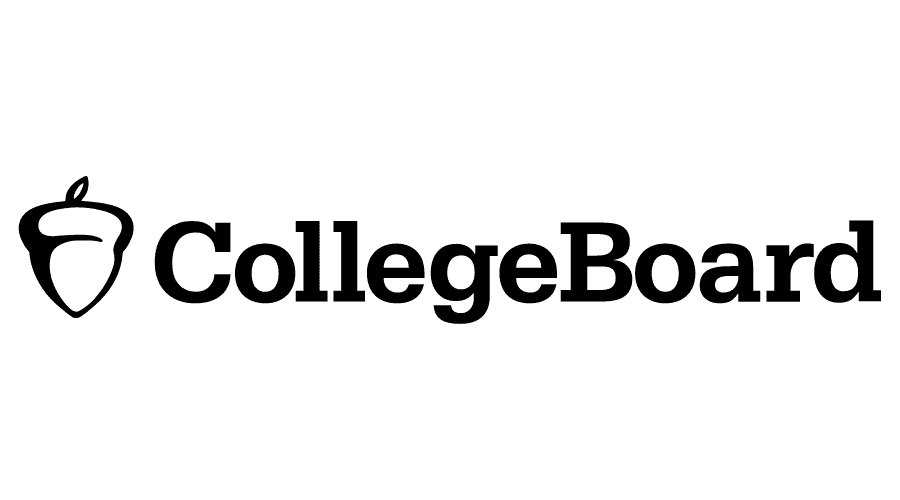OCT. 28, 2015 | District Accountability Plans Mushroom in Size and Complexity | EdSource | By Michael Collier and Louis Freedberg |
Two years after California required its more than 1,000 school districts as well as charter schools to draw up Local Control and Accountability Plans to establish goals and describe how they would use state funds, the documents have mushroomed in size, in some cases to hundreds of pages long.
The burgeoning size of the LCAPs, as they are commonly referred to, is raising questions about whether after just two years in existence they are turning into a daunting bureaucratic exercise, taking hundreds of work hours to draw up and many more hours of review by county officials who must approve the plans.
The length of the documents may also make them hard for parents and other community stakeholders to read and understand, undercutting one of their principal goals, which is for districts to be transparent about their goals and to make districts accountable for meeting them.
According to an EdSource survey, the average length of an LCAP in the state’s 30 largest districts last year was 54 pages, and this year it has grown to 145 pages.
Two-thirds of the plans at least doubled in size from last year – with some of them growing three, four, or even five-fold.
In 13 districts, the document ranged from 50 to 100 pages. In 10 districts, plans were between 100 to 200 pages, and in six districts they were more than 200 pages.
The heftiest plan for the current school year is the San Bernardino City Unified district’s document, which is 438 pages long, up from 119 pages last year.
West Contra Costa Unified, with an LCAP of 47 pages, is the only district among the 30 surveyed that had a plan fewer than 50 pages this year.
(Go to end of this article for LCAP lengths in selected districts.)
The Local Control and Accountability Plans are the centerpiece of a major reform of California’s school finance system, championed by Gov. Jerry Brown and approved by the state Legislature in July 2013, that shifts more decision-making powers to local school districts and allocates additional funds to districts based on the number of low-income students, English learners and foster children they serve.
State education leaders, as well as many advocates, face a dilemma. The plans should be accessible and understandable to a range of education constituencies, including those that traditionally have not been involved in budget decision-making. But they must also be detailed enough to give a clear indication of what exactly a school district is going to do in eight “priority areas” set by the state, ranging from academic performance to school climate and parent engagement.
One reason for the super-sizing of some of the plans is that the State Board of Education last year changed the template, among other things adding a section requiring districts to include an annual update. State regulations had already resulted in a lengthy document, because districts have to provide a detailed action plan for each priority area, along with a breakdown for subgroups of “high needs” students, and expenditures for each. The updates required by the board had the potential to double the length because each action described in the accountability plan could invite a detailed response.
In a memo to the State Board of Education in advance of its meeting next week in Sacramento, the California Department of Education has found that “in many cases, LCAPs are challenging due to the length and complexity of information.” As a result, the report said, “the implementation is falling short of coherent goals and transparent decisions” about how districts are allocating state funds.
Concerns about the plans’ length and accessibility came up at the board’s meeting last month. Aida Molina, an assistant superintendent in the Bakersfield City School District and a Gov. Brown appointee to the board, said that drawing up the plan in her district had been a “cumbersome process.” “It is not easily read and understood,” she said.
Sue Stickel, the deputy superintendent of the Sacramento County Office of Education, said at the meeting that the template devised by the state – along with revisions to it a year later – were “very well meaning” but that the plans are now “very cumbersome for the public to review.”
That certainly appears to be the case in Los Angeles Unified, by far the state’s largest district. Its current plan grew more than five-fold, from 39 pages last year to 224 pages for the current school year.
“It was a very tedious process,” said Linda Bardere, communications director for San Bernardino City Unified, particularly when transferring last year’s document to the new template – and translating the new plan into Spanish. District officials, she said, believe the document is is clear to most parents, teachers, students and community members. But she acknowledged that the current format “may be intimidating to some people in the community.”
In drawing up its plan, a district is required to get input from a range of education constituencies, including parents, teachers and even students. The plan must then be reviewed by the district’s county office of education, and updated each year.
The task of putting together an LCAP from start to finish is daunting – and it is getting more challenging every year. In Sacramento County, for example, the average length of an LCAP last year in the county’s 13 districts was 50 pages. By this year, the average length of a plan in the county had grown to 120 pages, according to a report from the Sacramento County Office of Education that was presented to the California State Board of Education in September.
Some districts have attempted to make their plans user-friendly, typically by adding an easier-to-read summary at the beginning of the document. Fremont Unified in Alameda County and Corona-Norco Unified in Riverside County, for example, have come up with bold infographics to explain what is in their current documents. The West Contra Costa Unified district, whose plan last year was 18 pages, has summarized its 47-page document this year in a three-page executive summary.
The California Department of Education is compiling examples of school district attempts to make the LCAPs easier to navigate, and will present those to the state board at its November meeting.
At the same time, the plans have become a drain on employees’ time in districts and at the county offices of education that are required to review and approve the plans. The Sacramento County Office of Education estimates that it took an average of 44 hours to review a small district’s plan, and 90 hours to review a large district’s plan. In total, it estimated it spent nearly 1,200 hours to review the LCAPs of the 13 districts in the county, which included 258 hours of professional development to prepare county staff to do the reviews.
Administrators in the Kern High School district managed to trim the district’s goals from 27 last year to just four this year – and still ended up with a plan that increased by 329 pages from 66 pages last year, for a total of 395 pages this year.
As in other districts, Kern’s document ballooned largely as a result of the new template required by the state, said Lisa Gilbert, chief academic officer in the Kern County Office of Education.
Gilbert pointed out that, notwithstanding its length, the district’s plan and the process for adopting it has been positive. One outcome is that more parents are coming to meetings and giving feedback to school officials.
Students also are voicing their views on how to improve their education, “even if they didn’t read all 400 pages” of the plan,” Gilbert added. “Now the average person is engaged in the process,” she added, while local media are covering school district meetings.
“When I look at our LCAP, I see it as very valuable,” Gilbert said. “It’s engaging a broader part of the community at a deeper level than ever before.”
There is, however, a danger that districts’ plans will meet the same fate as the School Accountability Report Cards, an annual report that every school in the state is required to draw up. It was mandated by Proposition 98, approved by voters in 1988.
Over the years, the SARC has grown to an unwieldy length and has mostly become a compliance exercise that few people know about, let alone read. Like the LCAPs, the SARCs were supposed to provide information to ordinary Californians to “ensure our schools are spending money where it is needed most,” according to the language of the Prop. 98 initiative.
“We want to make sure this (the LCAP) does not become another compliance exercise but instead one that is moving to supporting a local-driven system of continuous improvement,” Peter Birdsall, executive director of the California County Superintendents Educational Services Association, told the State Board last month.
LCAP PAGE LENGTHS IN 30 DISTRICTS WITH LARGEST ENROLLMENTS
| Districts | Enrollment | 14-15 LCAP Pages | 15-16 LCAP Pages | Page Increase | Percent Change |
| Kern Union High | 37,318 | 66 | 395 | 329 | 498.48% |
| San Bernardino City Unified | 53,365 | 119 | 438 | 319 | 268.07% |
| Oakland Unified | 48,077 | 81 | 359 | 278 | 343.21% |
| Stockton Unified | 40,057 | 52 | 235 | 183 | 351.92% |
| Los Angeles Unified | 646,683 | 39 | 221 | 182 | 466.67% |
| Mt. Diablo Unified | 31,923 | 187 | 333 | 146 | 78.07% |
| Fresno Unified | 73,543 | 41 | 143 | 102 | 248.78% |
| Twin Rivers Unified | 31,035 | 55 | 138 | 83 | 150.91% |
| Long Beach Unified | 79,709 | 47 | 129 | 82 | 174.47% |
| Sweetwater Union High | 41,018 | 30 | 111 | 81 | 270.00% |
| Corona-Norco Unified | 53,739 | 46 | 121 | 75 | 163.04% |
| San Francisco Unified | 58,414 | 30 | 95 | 65 | 216.67% |
| Moreno Valley Unified | 34,170 | 24 | 89 | 65 | 270.83% |
| San Jose Unified | 32,938 | 35 | 99 | 64 | 182.86% |
| Santa Ana Unified | 56,815 | 25 | 88 | 63 | 252.00% |
| Sacramento City Unified | 46,868 | 31 | 94 | 63 | 203.23% |
| San Juan Unified | 49,114 | 71 | 132 | 61 | 85.92% |
| San Diego Unified | 129,779 | 63 | 123 | 60 | 95.24% |
| Poway Unified | 35,629 | 39 | 99 | 60 | 153.85% |
| Irvine Unified | 31,392 | 42 | 100 | 58 | 138.10% |
| Capistrano Unified | 54,036 | 26 | 73 | 47 | 180.77% |
| San Ramon Valley Unified | 31,954 | 16 | 58 | 42 | 262.50% |
| Fremont Unified | 34,208 | 58 | 97 | 39 | 67.24% |
| Fontana Unified | 39,470 | 65 | 101 | 36 | 55.38% |
| Anaheim Union High | 31,659 | 47 | 82 | 35 | 74.47% |
| Garden Grove Unified | 46,177 | 52 | 85 | 33 | 63.46% |
| Elk Grove Unified | 62,888 | 87 | 118 | 31 | 35.63% |
| West Contra Costa Unified | 30,596 | 18 | 47 | 29 | 161.11% |
| Clovis Unified | 41,169 | 29 | 56 | 27 | 93.10% |
| Riverside Unified | 42,339 | 111 | 87 | -24 | -21.62% |



